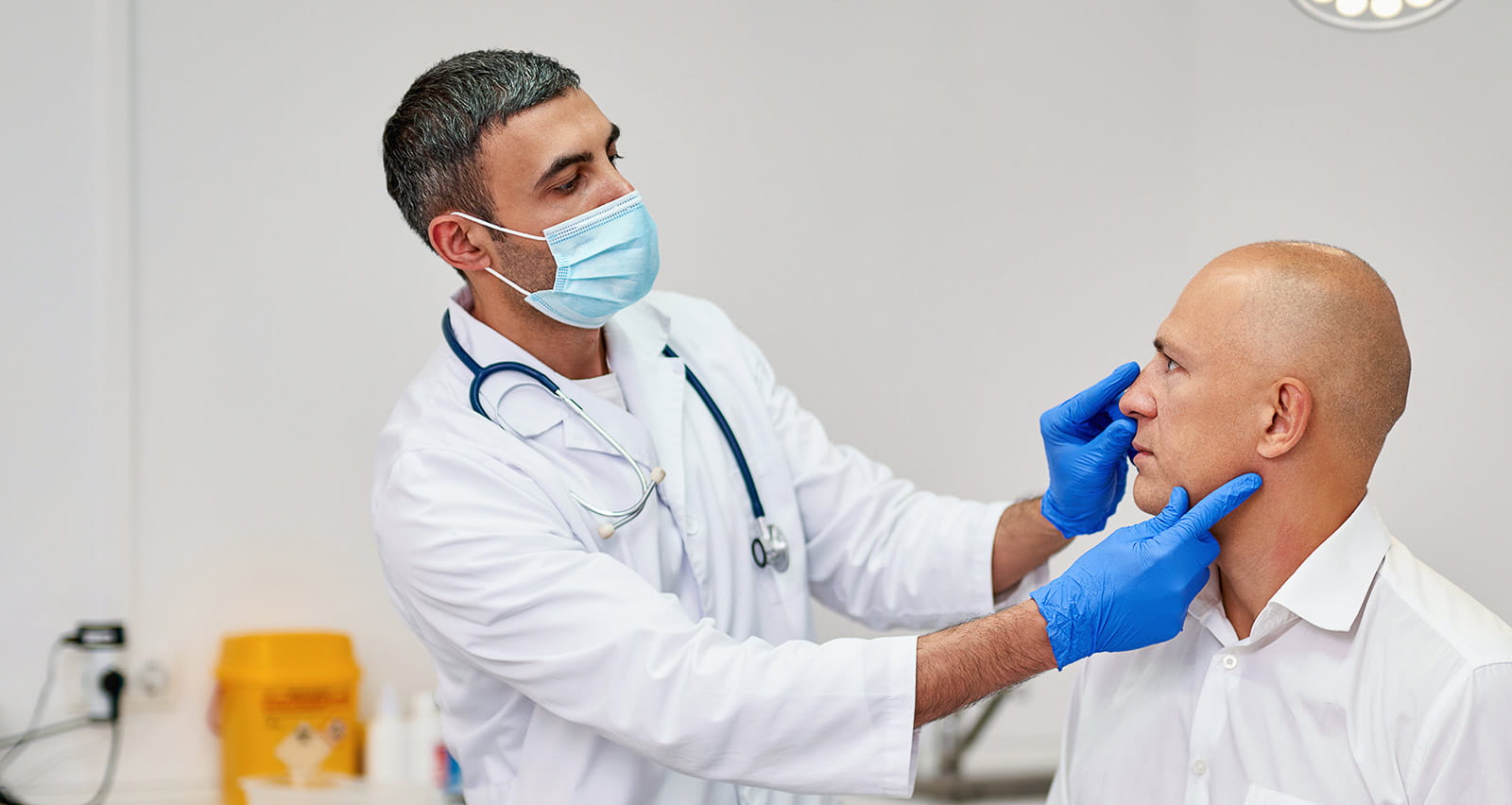
Nasal Reconstruction After Trauma or Cancer
Surgical nasal reconstruction procedures are designed to rebuild the nose after traumatic injury or treatment for disease. Whether caused by skin cancer, accidents, burns, infections or other conditions, damage to the nose can affect breathing and facial appearance and significantly impact a person’s quality of life.
The facial plastic surgeons at University Hospitals use the most advanced techniques to restore the nose’s appearance and preserve its vital functions.
Make an Appointment
To schedule a consultation with a UH facial plastic surgeon, call 216-844-3223.
Find a UH Facial Plastic SurgeonThe Reconstruction Process
Nasal reconstruction is a highly personalized procedure, tailored to the patient’s unique anatomy, the extent of the damage and their goals. It typically involves a multidisciplinary team including plastic surgeons, ENT specialists and dermatologists.
The process begins with a comprehensive medical evaluation to assess the size, depth and location of the defect and the patient’s overall health. The functional and cosmetic goals of surgery will be discussed, with breathing issues prioritized. Imaging scans or 3-D modeling techniques may be used to plan complex reconstructions.
Surgical Techniques for Nasal Reconstruction
The nose consists of skin, cartilage, bone and mucosal lining, all of which may need repair after trauma or treatment for skin cancer. The techniques used will vary based on the severity of the defect and may include:
- Cartilage grafts. Cartilage borrowed from the ear, rib or nasal septum is used to rebuild the nose’s framework, ensuring structural support and shape.
- Bone grafts. In cases of severe trauma, bone tissue may be borrowed from the hip, leg or ribs to rebuild the bony structures of the nose, such as the nasal bridge.
- Mucosal lining reconstruction. Tissue is borrowed, often from the forehead, cheek or forearm to repair the mucosal lining of the nose, which is necessary to maintain airflow and prevent nasal collapse.
- Microvascular free flaps. Severe defects may require more complex techniques like microvascular free flaps, in which tissue from a distant site like the forearm is transplanted along with its blood supply.
Recovery and Follow-up
The facial plastic surgeons at University Hospitals use minimally invasive, endoscopic techniques for nasal reconstruction whenever possible to reduce both scarring and recovery time.
Depending on the complexity of the procedure, the recovery process will typically include:
- Swelling and bruising for several weeks.
- Some post-operative pain, which can be managed with medication.
- A nasal splint or cast to provide support.
- Monitoring for complications like infection or graft failure.
- Functional monitoring like breathing tests to ensure adequate airflow.
- A gradual return to normal activities over several months.
- Scar management techniques like laser therapy or steroid injections as needed.
Make an Appointment
Schedule a consultation with a UH facial plastic surgeon.


